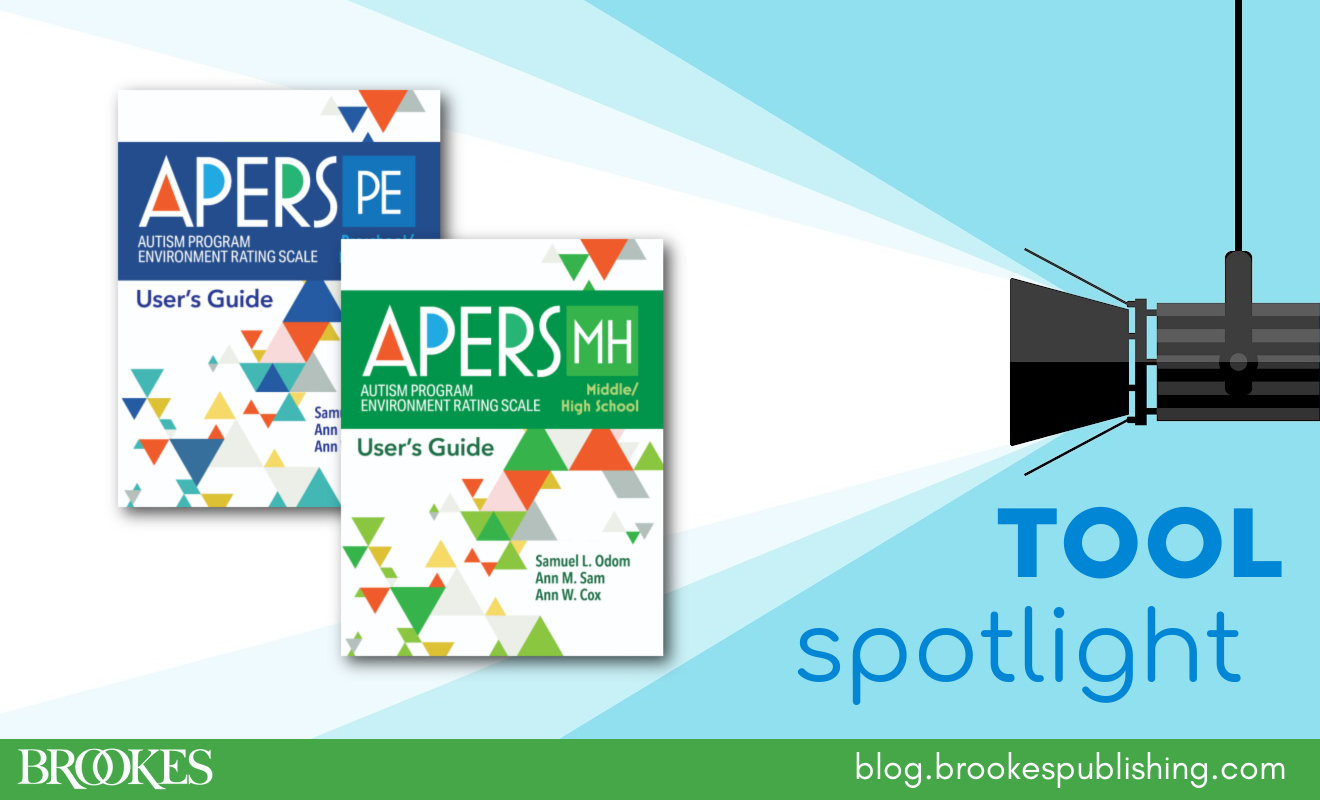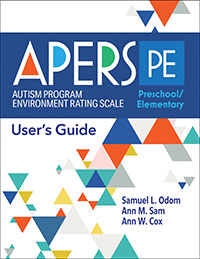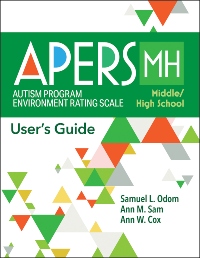Tool Spotlight: The Autism Program Environment Rating Scale
November 21, 2023

 Does your school or program provide a high-quality education for students on the autism spectrum? Are there effective supports in place for learning, development, and participation? You can uncover the answers you need with the Autism Program Environment Rating Scale, developed by experts Samuel L. Odom, Ph.D., Ann M. Sam, Ph.D., & Ann W. Cox, Ph.D.
Does your school or program provide a high-quality education for students on the autism spectrum? Are there effective supports in place for learning, development, and participation? You can uncover the answers you need with the Autism Program Environment Rating Scale, developed by experts Samuel L. Odom, Ph.D., Ann M. Sam, Ph.D., & Ann W. Cox, Ph.D.
Today’s post highlights the benefits of these two assessments, what they evaluate, how they’re administered, and more!
What is the APERS?
The Autism Program Environment Rating Scale for Preschool/Elementary (APERS-PE) and Middle/High School (APERS-MH) are in-depth assessments that evaluate the quality of educational programs for preschool through high school students with autism. Filling the need for a reliable tool focused specifically on the unique learning needs of autistic students, the APERS draws on observations, interviews, and reviews of student records to yield ratings of key domains critical to program quality.
Why was a tool like the APERS needed?
The APERS matters because quality matters. The quality of a program is the foundation on which teachers and other service providers may implement evidence-based practices. Poor program environments are unstructured, do not have clear routines, lack clearly defined and individualized goals, do not engage in instruction that targets goals, have little cross-disciplinary collaboration, and have poor relationships with families. Such settings aren’t good for autistic children and youth or for the adults working in them. Implementation of evidence-based practices is nearly impossible in such settings, and federal law does require that teachers and service providers base their instruction on research-based practices.
What domains do the APERS tools assess?
Both APERS-PE and APERS-MH look at the following 10 domains critical to program quality:
- Learning Environments
- Positive Learning Climate
- Assessment and IEP Development
- Curriculum and Instruction
- Communication
- Social Competence
- Personal Independence and Competence
- Interfering Behavior
- Family Involvement
- Teaming
The APERS-MH also covers an additional domain: Post-Secondary Transition Planning
What are the benefits of using the APERS?
Use the APERS to:
- Measure what matters. The APERS assesses program features that are most likely to influence the learning and behavior of autistic students.
- Get clear and actionable results. Detailed scores and easy-to-read graphics of results help you pinpoint your program’s strengths and take action to resolve challenges.
- Inform professional development. The assessment helps you determine where teachers might need more training and support.
- Provide proof of quality. APERS data is a powerful way to demonstrate the quality of your program to decision makers and families.
Is the APERS exclusively for inclusive classrooms?
The APERS tools are ideal for use with all classroom types: inclusive classrooms, self-contained classrooms, and programs that combine elements of both.
Are the APERS assessments reliable and valid?
Yes—studies have demonstrated that APERS is a reliable and valid measure of quality. The APERS has been used to document change across time as well as difference between intervention approaches designed to improve quality. (The User’s Guides for each tool include an in-depth look at the psychometric features of the APERS.)
How does an APERS assessment work?
To complete the assessment, a trained APERS rater—such as an autism specialist or a school psychologist—visits the program. The rater reviews student records for two to three focal students with autism, interviews school personnel and parents of the focal students, and observes the students during their school day, taking notes throughout the process. Then the rater completes an electronic scoring tool, which automatically generates item scores, overall program scores, scores for each domain (and dimensions within the domains), and graphs that provide a visual snapshot of the program. The rater writes up a report and shares results with school personnel for use in quality improvement.
Also included is an optional Self-Assessment used by teachers and other service providers to guide them in program improvement plans. It can also be used as part of performance reviews and as a tool for communicating with families about program features.
Is APERS training recommended?
Yes, training is strongly recommended for all APERS raters. APERS training is provided through Frank Porter Graham Child Development Institute (FPG) at the University of North Carolina at Chapel Hill.
An excellent way to document your program’s strengths and make a plan to address areas for improvement, the APERS is your first step toward building better educational experiences for autistic learners. You can order the tools at the links below!




Write a Comment
Your email address will not be published. Required fields are marked *
Post a Comment